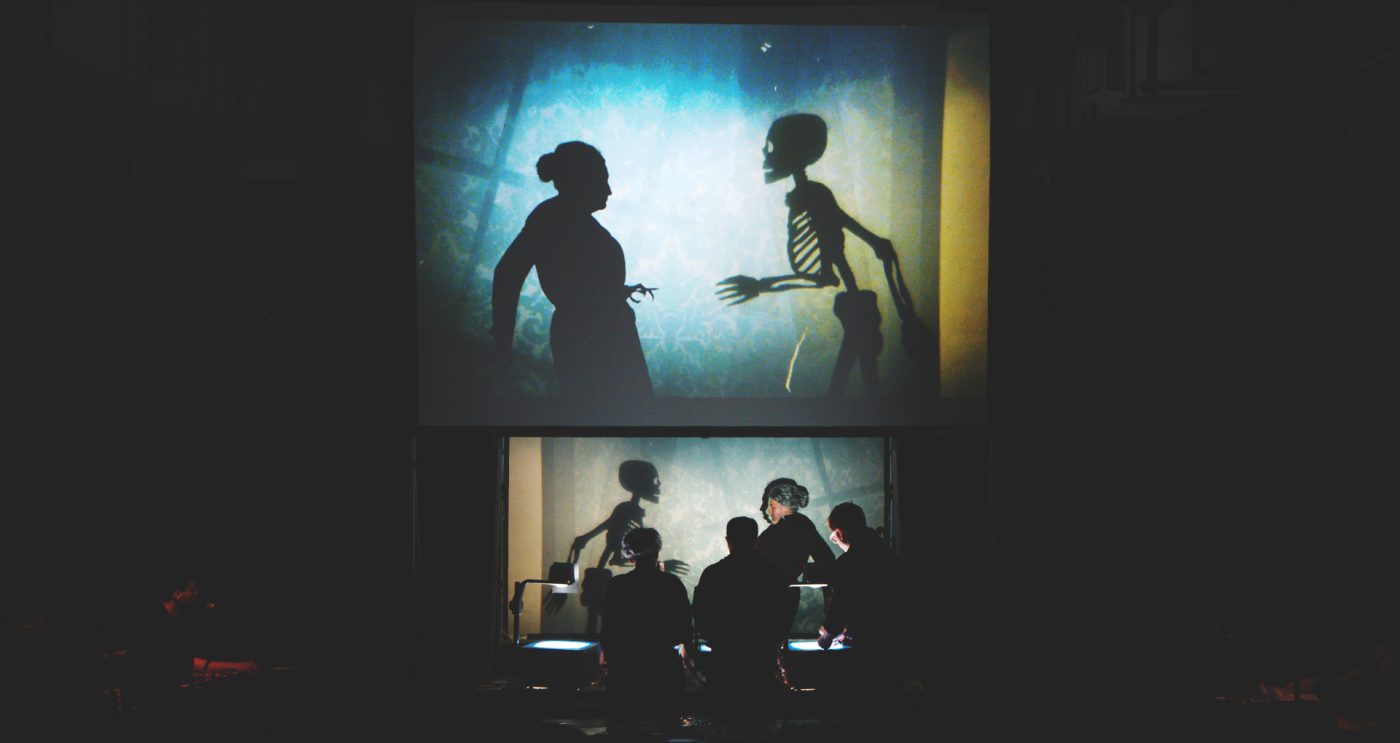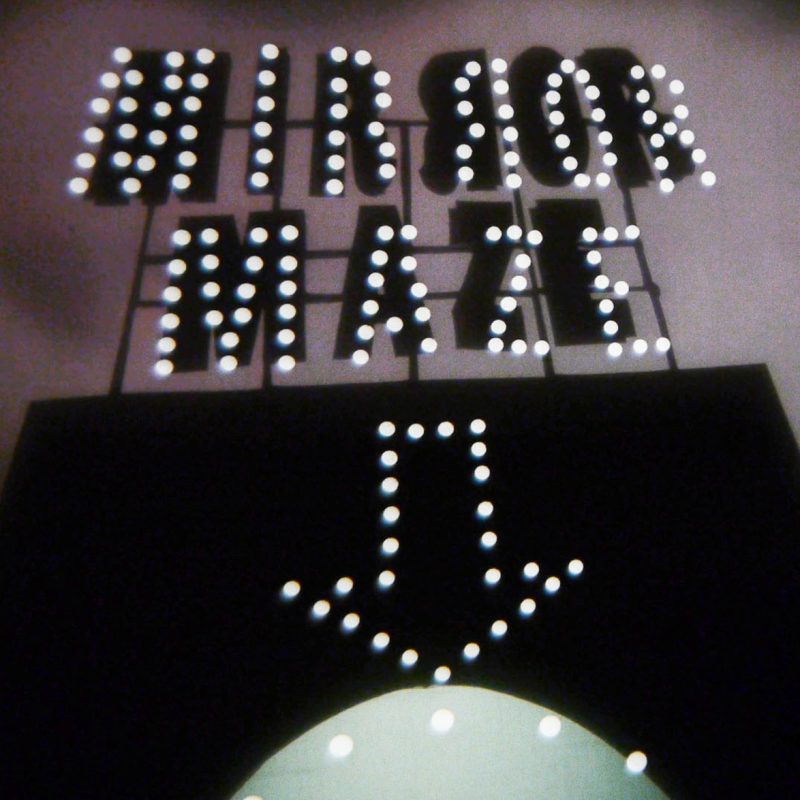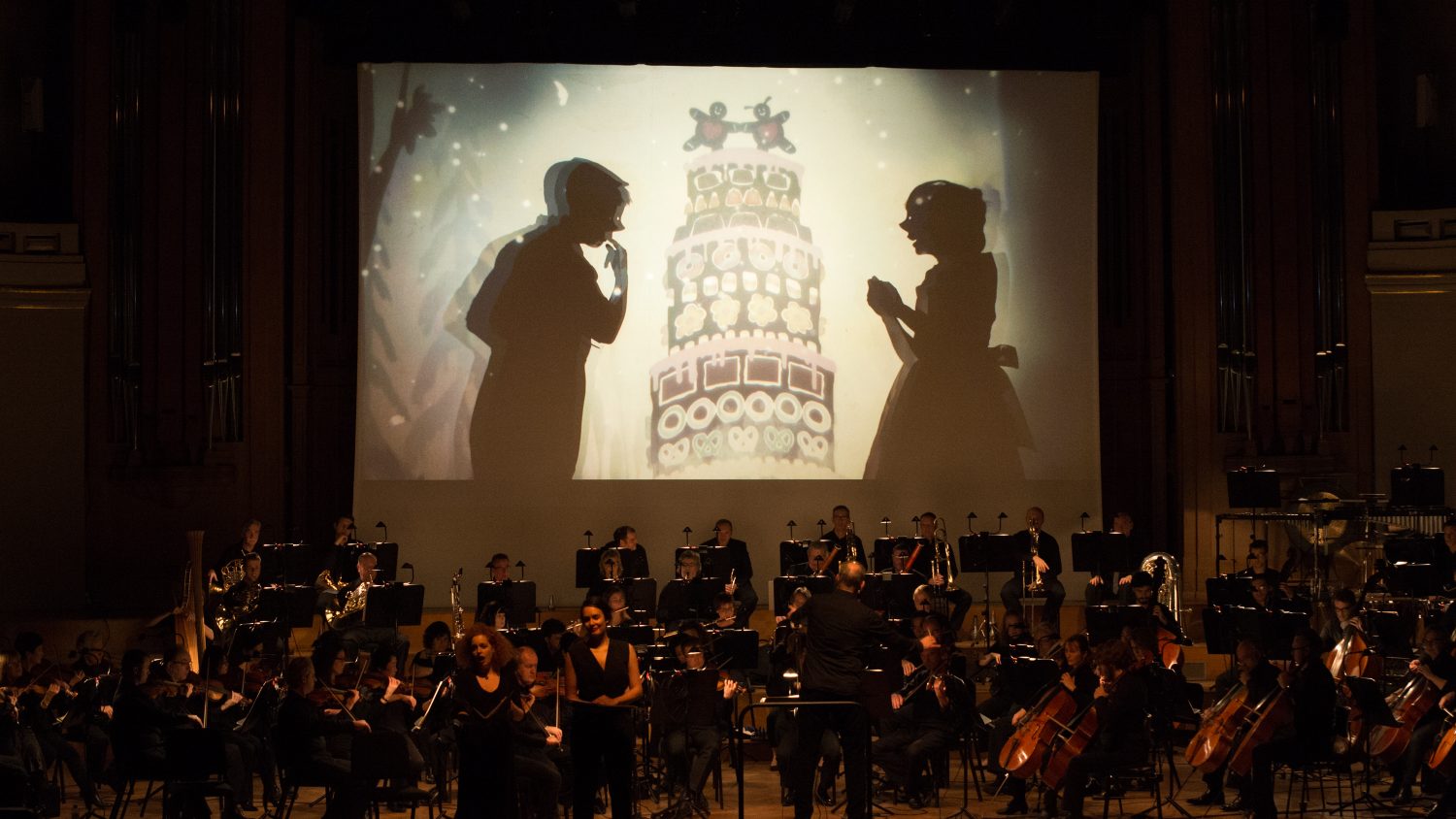- News
- Manual Cinema: Old art forms breathe new life into theatre
Manual Cinema: Old art forms breathe new life into theatre
By Taryn Plater
How does a “machine art” create an emotional connection with an audience?
In a world where we are so saturated with entertainment, there is something particularly exciting about the uniqueness of live theatre. And when theatre itself challenges its own convention and bridges genres – that is something even more special.
Manual Cinema has captivated its audiences since 2010 using nothing but paper and light from old projectors. Masters of their art form, the members of Manual Cinema have created three full-length live theatre productions, including Ava/Ada, two site-specific shows, and numerous collaborations. With a fascinating melding of the cinematic and theatrical, digital and analogue, light and shadow, this Chicago troupe delivers performances that captivate and enchant as most of us would never expect of shadow puppetry.

Manual Cinema’s chosen medium is thousands of years old with its roots in China and India. The ancient art of shadow puppetry realized with vintage machines cannot help but evoke a sense of nostalgia. Often nostalgia runs the risk of becoming more cliché than romantic, but Manual Cinema’s unique take converts this nostalgia to a rich backdrop for charming stories and impressive craftsmanship.
“Such creations of young artists, for whom boundaries of tone and discipline are increasingly irrelevant, are paradoxically both nostalgic and prescient. Welcome to a brave new sensibility that’s corny and cutting-edge, backward and forward looking, at the same time.” (The New York Times, 2015)
The stories often have a magical or surreal element, or references to classic films, suggesting an attachment to the past. At the same time, the troupe is always developing new techniques that elevate the work and help breathe life into each story. This combination of past and future is the magic ingredient. It lets paper cut-outs create an emotional connection. It allows a cinematic show to edge into the world of live theatre. It transcends mediums, genres, eras.
Similar to the way artists are experimenting with the role of live theatre in our world of ultra-accessible entertainment, Manual Cinema is challenging the role of analog technology in a digital age. Live music, analog projections, and performers combine to create shows that are not just on par with the experience of seeing a movie, but even more charming for their ingenuity.
They “[ask] us to accept the physical and emotional integrity of machine-art” (Northwest Chicago Film Society, 2012).
Even in the use of the most basic tool – light and shadow – Manual Cinema takes something we would think of as binary, black and white, and makes it transient by playing with depth and transparency. Add to this mixture a live theatre audience, and you have one very unique mass cultural experience.


True to its exploratory nature, Manual Cinema has applied its unique art form to many different contexts. Collaborations with opera, symphony, and radio (to name only a few) have enlivened these genres, each of which has a similar issue with appearing antiquated. In each case, the collaborators had the opportunity to recontextualize their own art form, and create something exciting for both the artists and the audience.
A 2015 collaboration with the Belgian Royal Opera on a production of Hansel and Gretel had Manual Cinema live-streaming projections of its whimsical visuals onto a screen as the opera was performed. This introduced the new challenge of reacting to a conductor in real-time, and added another level of collaboration to the group’s shadow puppetry.

Other notable collaborators have included:
Q Ensemble – An innovative string trio dedicated to “reshaping the perception of what chamber music performance can be”. The collaboration, FJORDS, is a series of 14 short pieces based on the poetry of Zachary Schomburg.
NPR – Invisibilia is a weekly radio show that tells stories about the “invisible forces that control human behaviour”. Manual Cinema performed a live adaptation of one story to celebrate the premiere of the second season.
Third Coast International Audio Festival – Manual Cinema partnered with Third Coast to create the Radio Cinema Challenge. The group created four videos to inspire participants, and then adapted the winning submission into a live performance piece.
Next up in 2017 is an immersive adaptation of The Little Prince, a fourth feature-length show based on the novel Magic City by Edith Nesbit, and a short film based on Virginia Wolf’s The Haunted House. In October 2017 Manual Cinema will be featured in the Chicago Symphony’s MusicNOW series – yet another exciting new collaboration with an unexpected partner.
This enthusiasm for new approaches to performance art is valuable and, many believe, essential to the future of theatre. The moment you take traditions and conventions of a genre for granted is the moment you take an audience’s investment for granted. Manual Cinema has become an international success through the blending of new approaches with familiar traditions. These shows are worthwhile experiences because there is nothing quite like them.
Taryn Plater is in her fourth year at UBC, pursuing a dual degree in Music and Linguistics, and a Master of Management. She is passionate about expanding the role of the performing arts in our society, and is currently Marketing & Communications Assistant at the Chan Centre for the Performing Arts.
Manual Cinema presents Ada/Ava at the Chan Centre for the Performing Arts’ Telus Studio Theatre as part of the Beyond Words series on February 7, 2017.
